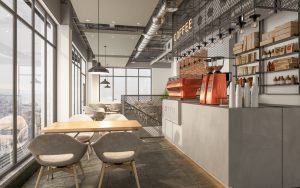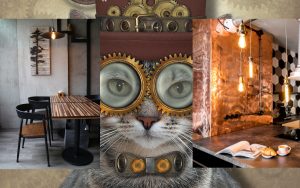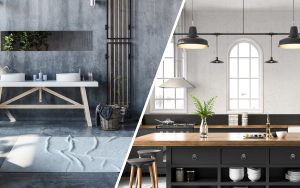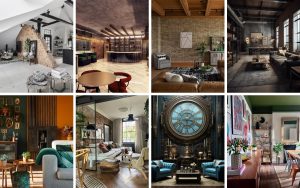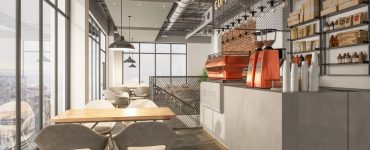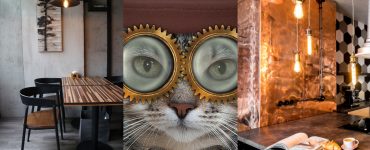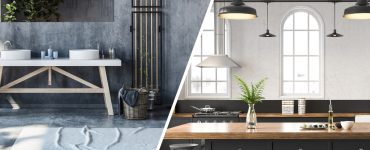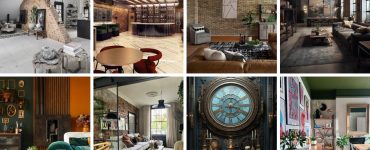Beyond just aesthetics, the psychology behind industrial design holds the key to unlocking a realm of emotional and mental well-being. In this blog post, we will delve into the intriguing aspects of industrial interior design and explore its profound impact on mood and overall well-being.
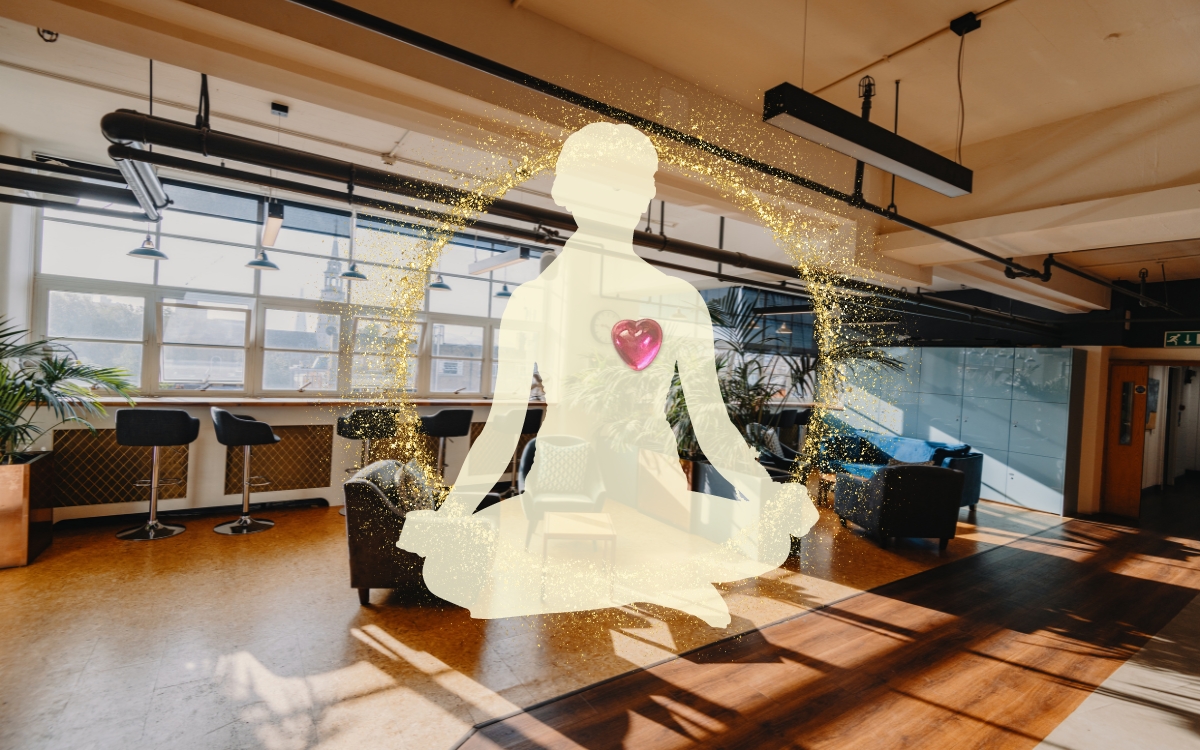
From the humble beginnings of repurposed warehouses and factories to the contemporary embrace by homeowners, businesses, and designers alike, industrial interior design has evolved into a powerful movement. As we explore the psychology behind this design style, we will uncover how it harnesses the influence of our environment to shape our emotions, creativity, and productivity.
Understanding the Psychology of Industrial Interior Design
Industrial interior design is a captivating design style that has grown in popularity over the years. Characterized by its raw, utilitarian appeal and minimalistic approach, it takes inspiration from repurposed factories, warehouses, and industrial spaces. Beyond its distinct aesthetics, industrial interior design has a profound impact on our emotions, mood, and overall well-being. In this section, we will explore the psychological aspects that underlie the charm of industrial design and how it influences our minds and lives.
Raw and Natural Materials: Connecting with Nature
In the realm of interior design, few elements hold the power of raw and natural materials when it comes to creating a deep and meaningful connection with nature. Industrial interior design beautifully incorporates these elements to craft spaces that resonate with our innate need to be in harmony with the natural world. In this section, we will explore the significance of raw and natural materials in industrial design and how they evoke a profound sense of connection with nature.
Utilizing Raw Materials in Design
At the heart of industrial interior design lies a fascination with materials in their unaltered, authentic form. Elements like exposed brick walls, concrete floors, and reclaimed wood beams are emblematic of this design style. These raw materials are celebrated for their unique textures, imperfections, and rich histories, showcasing the beauty of impermanence and natural aging.
By incorporating these materials into interior spaces, designers not only create visually striking environments but also tell a story of resilience and timelessness. The juxtaposition of industrial materials with contemporary elements adds depth and character to the space, making it a canvas that reflects the passage of time.
Psychological Association with Nature
As humans, we have an inherent connection with the natural world, often referred to as biophilia. Studies have shown that exposure to natural elements, even in man-made environments, can positively impact our psychological well-being. When we encounter raw materials like wood, stone, and metal, our minds instinctively connect with nature, triggering feelings of comfort and tranquility.
The sight and touch of these materials activate sensory pathways that hark back to our evolutionary roots, reminding us of the beauty and wisdom of the natural world. This connection with nature can induce a sense of grounding and stability, offering solace in an increasingly fast-paced and technology-driven society.
The Calming Effect of Natural Materials
Incorporating raw and natural materials into interior design has been found to have a calming effect on individuals. The presence of wood, for example, is known to reduce stress and anxiety, with its warm and inviting characteristics providing a sense of reassurance and comfort. Similarly, the cool touch of exposed concrete or the sturdy feel of metal can evoke a sense of strength and security.
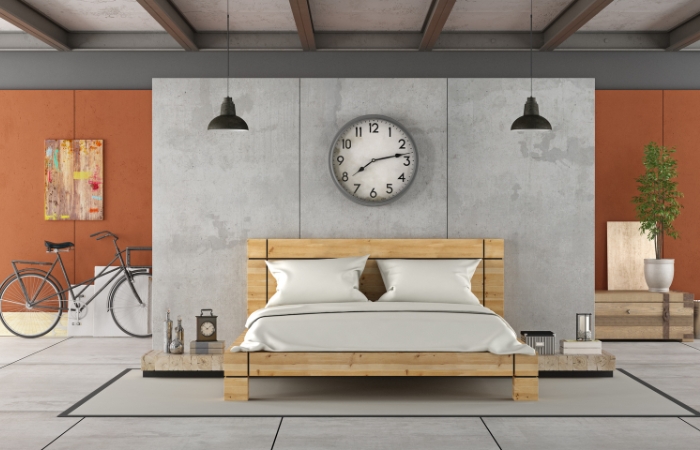
Exposed Architecture: Embracing Authenticity
In the realm of interior design, exposed architecture stands as a bold statement of embracing authenticity and revealing the beauty of structural elements that are often concealed. Industrial interior design expertly harnesses the power of exposed architecture, transforming spaces into captivating narratives of history and craftsmanship. In this section, we will explore the significance of exposed architecture in industrial design and how it fosters a genuine and trusting connection with our surroundings.
The Beauty of Unconcealed Structures
Exposed architecture is a design approach that celebrates the raw and unpolished beauty of structural elements. This may include leaving beams, columns, pipes, and ductwork exposed rather than hiding them behind walls or false ceilings. By exposing these elements, the space becomes a canvas of industrial artistry, showcasing the inherent charm of functional structures.
The appeal of exposed architecture lies in its unique aesthetic, where the marks of time, weathering, and use become badges of authenticity rather than blemishes. Every scratch and patina tells a story, weaving the past with the present, and creating an environment with a soulful sense of character.
Impact on Perceived Space and Mood
The presence of exposed architecture has a significant impact on the perceived space within a room. By removing the barriers that typically enclose structural components, the space appears more open and expansive. This design tactic enhances the feeling of airiness and freedom, promoting a sense of spaciousness even in smaller areas.
Moreover, the juxtaposition of industrial elements with modern furnishings and decor infuses the space with a dynamic energy. Exposed architecture becomes a conversation between the past and the present, fostering an atmosphere of intrigue and curiosity.
Fostering a Sense of Authenticity and Trust
In a world where artificiality can pervade every aspect of our lives, exposed architecture offers a refreshing contrast by exemplifying authenticity. The decision to reveal and preserve the inherent characteristics of the building materials conveys a genuine intention to honor the history and craftsmanship of the space.
This authenticity translates into a sense of trust that occupants feel within the environment. Exposed architecture creates a transparency that aligns with our need for spaces that feel honest and true to their origins. This can be especially impactful in commercial settings, as businesses and brands seek to build trust with their customers and clients.
Neutral Color Palette: Encouraging Balance and Serenity
In the world of interior design, color holds the key to evoking emotions and setting the tone for a space. A neutral color palette, with its subtle and understated hues, plays a vital role in industrial interior design, creating an ambiance that encourages balance and serenity. In this section, we will delve into the significance of a neutral color palette in industrial design and how it fosters a sense of harmony and tranquility within our living and working spaces.
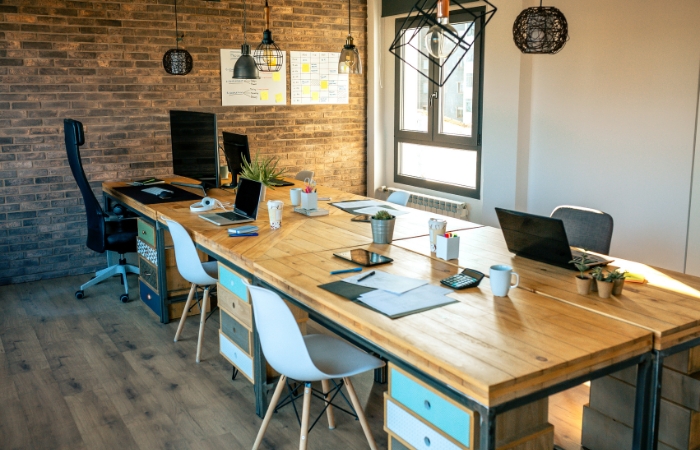
Earthy and Neutral Colors in Industrial Design
A neutral color palette typically consists of shades like whites, grays, beiges, and muted tones of brown. In industrial interior design, these colors are often complemented by hints of black, creating a refined and sophisticated atmosphere. The absence of bold and vibrant colors allows other design elements, such as raw materials and exposed architecture, to take center stage, emphasizing the beauty of simplicity and minimalism.
Psychological Effects of Colors on Emotions
Colors have a profound impact on our emotions and psychology. Bright and intense colors can elicit strong reactions, whereas neutral colors tend to have a calming and grounding effect. The softness and subtlety of neutral hues promote a sense of relaxation and composure, helping to reduce stress and anxiety.
Neutral colors also offer a blank canvas for individuals to project their emotions and experiences onto, making the space feel more personal and adaptable to different moods and needs.
Creating a Serene and Balanced Ambiance
In industrial interior design, the use of a neutral color palette contributes to the creation of a serene and balanced ambiance. The soft and muted tones provide a soothing backdrop, allowing individuals to feel at ease within the space. This can be especially beneficial in busy or chaotic environments, as the neutral colors help to counteract sensory overload and promote a sense of clarity.
Moreover, a balanced color scheme fosters a harmonious atmosphere, where elements seamlessly blend together. This cohesion contributes to an overall feeling of unity and simplicity, inviting individuals to engage with the space without distractions.
Open Spaces and Minimalism: Enhancing Clarity and Focus
In the realm of industrial interior design, two key elements work in harmony to create an environment that fosters clarity and focus: open spaces and minimalism. Embracing a philosophy of “less is more,” industrial design expertly utilizes these principles to optimize the spatial experience and promote mental clarity. In this section, we will explore the significance of open spaces and minimalism in industrial design and how they contribute to enhancing clarity and focus within our surroundings.
Embracing Spaciousness in Industrial Design
Open spaces lie at the core of industrial interior design, allowing rooms to breathe and providing occupants with a sense of freedom and expansiveness. By avoiding clutter and unnecessary partitions, designers create an unobstructed flow that encourages movement and exploration.
The embrace of spaciousness is not merely about physical dimensions but also about the psychological impact it has on our minds. When we encounter open spaces, our thoughts and ideas can flow more freely, unencumbered by barriers or distractions. This sense of liberation allows us to experience a mental spaciousness that cultivates clarity and a sense of tranquility.
Psychological Benefits of Open Spaces
Numerous studies in environmental psychology have highlighted the positive effects of open spaces on human behavior and cognitive functioning. Being in open areas can reduce feelings of confinement and restlessness, promoting a greater sense of well-being and contentment. In workplaces, open spaces can encourage collaboration, creativity, and a sense of camaraderie among team members.
The openness of a space also allows for better light distribution, which has been linked to improved mood and energy levels. Natural light, in particular, is known to have a positive impact on productivity and mental alertness.
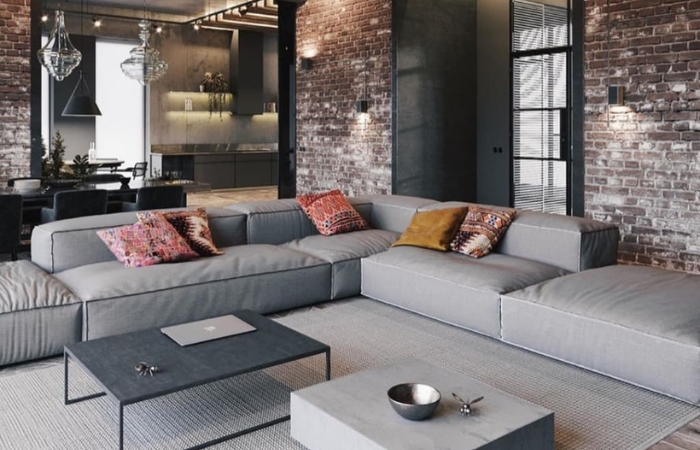
Reducing Cognitive Load with Minimalism
Minimalism is an essential tenet of industrial interior design, emphasizing simplicity and removing unnecessary elements to create a clean and uncluttered environment. The minimalist approach not only enhances the aesthetic appeal of a space but also reduces cognitive load.
A cluttered environment can overwhelm the brain, leading to increased stress and reduced focus. In contrast, a minimalist space provides visual clarity and order, enabling the mind to process information more efficiently. This reduction in cognitive load allows individuals to concentrate on the task at hand and maintain a sense of mental clarity.
The Impact of Industrial Interior Design on Well-being
Industrial interior design goes beyond just aesthetics; it has a profound impact on our overall well-being, influencing our emotions, productivity, and sense of connection with our surroundings. In this section, we will explore the transformative effects that industrial design can have on well-being and how it enhances various aspects of our lives.
Stress Reduction and Relaxation
The use of raw and natural materials in industrial interior design, along with the presence of open spaces and minimalism, creates an environment that promotes relaxation and reduces stress. The calming effect of nature-inspired elements, such as exposed wood and stone, helps to soothe the mind and alleviate tension. Moreover, the openness of the space and the absence of clutter contribute to a sense of tranquility, allowing individuals to unwind and find respite from the demands of daily life.
Enhanced Creativity and Inspiration
Industrial design’s celebration of authenticity and creativity extends to its impact on the human mind. The unpolished beauty of exposed architecture and the use of unique materials inspire individuals to think creatively and outside the box. The open and spacious environment fosters a sense of freedom, encouraging innovative ideas and imaginative thinking. This creative atmosphere can be especially beneficial in workplaces, where employees are seeking inspiration and novel solutions to challenges.
Improved Focus and Concentration
By promoting a clutter-free and organized space, industrial interior design reduces distractions and enhances focus. The minimalist approach allows individuals to concentrate on the essentials, minimizing visual and mental clutter that can hinder productivity. Additionally, the presence of natural light in open spaces has been linked to improved concentration and mental alertness, further optimizing our ability to stay focused and engaged in our tasks.
Boosting Productivity and Motivation
The combination of functional furniture, practical design elements, and an uncluttered environment contributes to heightened productivity and motivation. Utilitarian furniture supports efficient workflows and task completion, while the overall ambiance of the space fosters a sense of purpose and dedication. In workplaces, this can lead to increased job satisfaction and a greater sense of fulfillment in daily tasks.
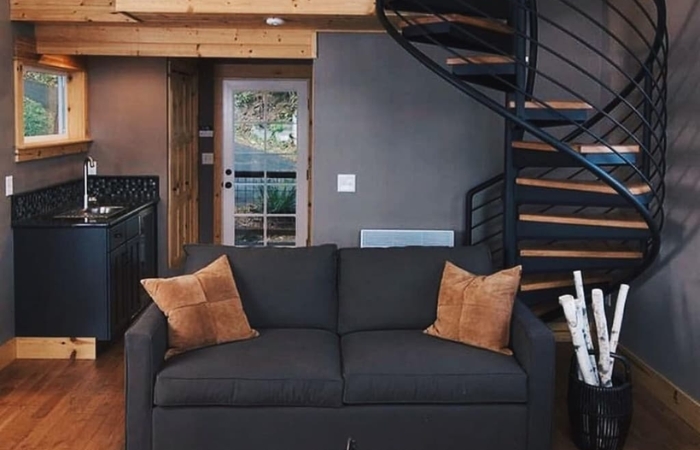
Fostering a Sense of Community and Connection
Industrial interior design has the power to create spaces that foster a sense of community and connection among individuals. The openness of the environment and the celebration of authenticity can cultivate a feeling of belonging and shared experiences. In public spaces, such as cafes or collaborative work areas, this communal atmosphere encourages interaction and social engagement, promoting a positive sense of well-being.
Conclusion
In conclusion, the psychology of industrial interior design goes far beyond its captivating aesthetics; it is a journey into the profound connection between our environment and our well-being. As we have discovered, the strategic use of raw materials, exposed architecture, neutral color palettes, open spaces, and functional furniture can wield a powerful influence on our emotions, creativity, and productivity.
By recognizing the impact of industrial design on our mood and overall wellness, we are empowered to create spaces that support and nurture our mental and emotional needs. From the tranquility and serenity evoked by natural materials to the clarity and focus enhanced by open spaces, each element plays a vital role in shaping our inner landscape.


